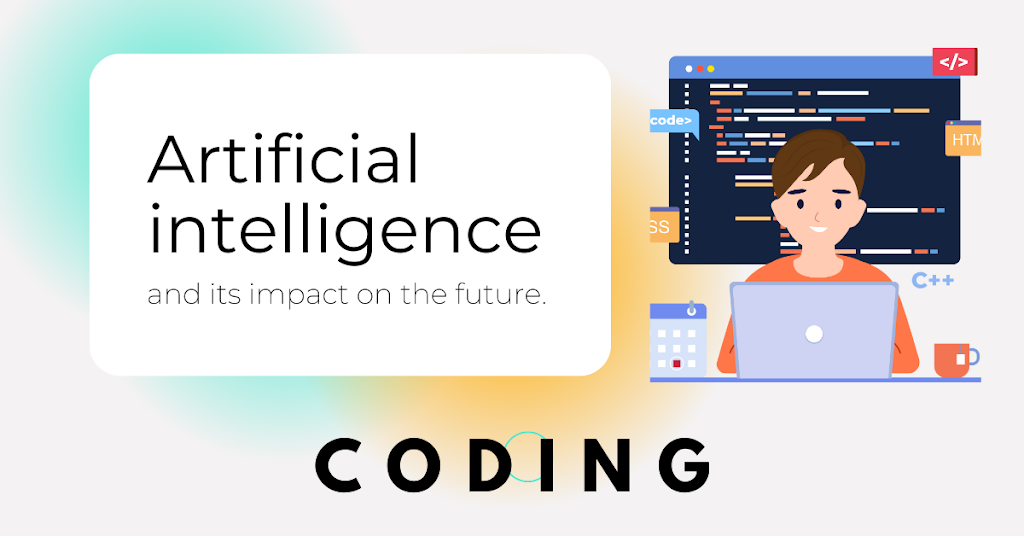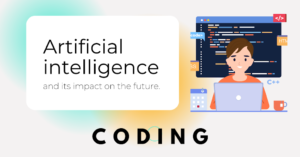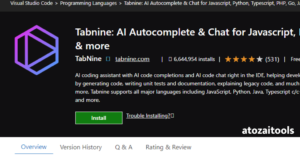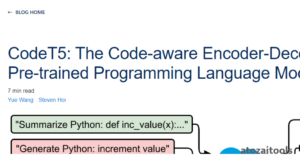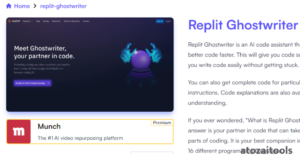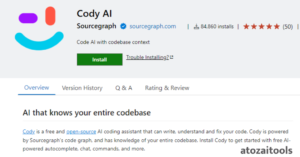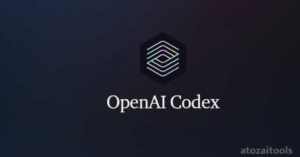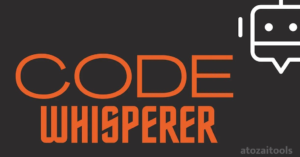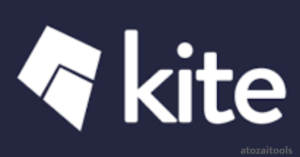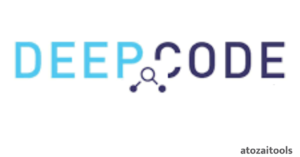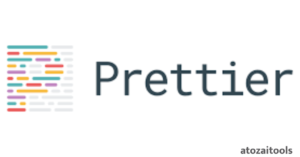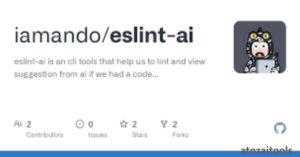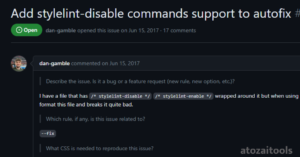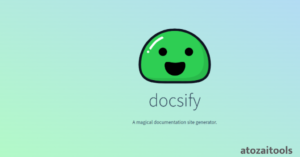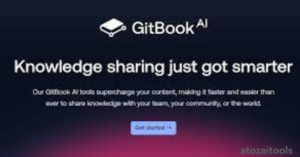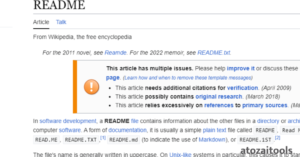Introduction
Let’s dive into the 20 best AI tools for coding today. When it comes to writing better code more quickly, there are some incredible tools available for programmers that function similarly to AI assistants. These tools are more than simply handymen; they’re like coding wizards, simplifying, organizing, and adding enjoyment to the process of coding. These artificial intelligence (AI) tools are revolutionizing the development landscape by proposing code paths and identifying problems before they arise. Now let’s explore the top 20 AI coding tools that are simplifying the process of coding.
Table of Contents
What is an AI Code Tool?
An AI code tool is a smart computer program that helps engineers write code faster and more accurately. It uses artificial intelligence to suggest code as developers type or provides prompts for auto-completion. These tools can translate code between different programming languages and assist in creating new programs. They’re also handy for quickly finding specific code snippets and generating documentation automatically.
How Does It Work?
AI code tool relies on algorithms trained on real code examples from open-source projects. These models can understand and produce text based on patterns learned from vast amounts of code.
They function in three main ways:
- Autocompletion as developers type code.
- Offering suggestions based on developer objectives.
- Direct communication for generating or fixing code.
Why Use an AI Code Tools?
There are multiple advantages to using an AI code generator, including:
- Time-saving: Automates repetitive coding tasks, allowing developers to focus on more creative problem-solving.
- Rapid development: Speeds up the process by generating functional code quickly, useful for time-sensitive projects.
- Standardized code: Generates code following industry standards, promoting clean and maintainable code.
- Error detection: Helps catch bugs early and offers advice on writing secure code.
- Accessibility: Makes coding more accessible, reducing skill barriers and encouraging innovation across industries.
20 Best AI Tools for Coding
The 20 best AI tools for coding are chosen based on popularity, functionality, and ease of use. These tools offer unique features, making coding tasks more efficient. From code editors with autocompletion to machine learning libraries for advanced data analysis, these tools are revolutionizing developers’ writing and debugging processes. They enhance productivity and help build better software.
1. GitHub Copilot
What is GitHub Copilot?
GitHub Copilot is a tool that helps developers write code by using AI. It learns from different code sources and understands the patterns and syntax of various programming languages.
How Does It Work?
Learning from Various Sources: GitHub Copilot analyzes code from open GitHub repositories using machine learning.
Providing Recommendations: It suggests code snippets relevant to the developer’s current project based on what they’re writing.
Key Features:
- GitHub Copilot offers several functions to assist developers:
- Autocompletion: It helps complete code snippets, saving time and minimizing errors.
- Code Production: Generates entire functions or methods, speeding up development.
- Error Detection: Identifies potential bugs and suggests solutions.
- Understanding Code: Provides explanations for functions and code snippets.
- Refactoring: Helps make code more readable and efficient.
Advantages:
- Enhanced Productivity: Helps write code faster and more accurately.
- Reduced Errors: Offers solutions to avoid mistakes.
- Better Code Quality: Enables the creation of more readable and manageable code.
- Increased Imagination: Facilitates experimenting with new code concepts.
- Reduced Learning Curve: Assists in learning new programming languages and technologies faster.
Drawbacks:
- Limited Originality: Sometimes, the code Copilot suggests might look similar across different projects, lacking uniqueness or creativity.
- Mistakes in Understanding: There could be times when Copilot misunderstands what you want and suggests code that doesn’t quite fit, needing you to correct it.
- Privacy Concerns: Since Copilot learns from public code, it might suggest things that are private or confidential, making some worry about privacy and ownership of ideas.
GitHub Copilot supports developers in writing better code, enhancing productivity, and accelerating skill development.
2. Tabnine
Introduction to Tabnine
Tabnine is an AI-powered coding assistant that works similarly to GitHub Copilot. It helps improve your coding process by using machine learning to predict what you might need next and suggesting helpful ideas.
How it Works:
Tabnine learns from your coding style, the project you’re working on, and open-source code. It predicts your next move accurately by analyzing coding patterns, suggesting personalized and context-specific code snippets.
Key Features:
- Enhanced Autocomplete: Goes beyond basic completion, predicting entire lines or code blocks based on your current context, saving typing time.
- Code Prediction: Anticipates your needs by suggesting relevant code snippets even before you start typing, acting like a coding genie.
- Error Detection: Watches for syntax errors and potential issues as you write code, aiding in avoiding bugs.
- Multi-Language Support: Works across various platforms and handles different programming languages, making it versatile for diverse coding projects.
Advantages:
- Faster Coding: Completing lines or suggesting snippets speeds up coding, reducing time spent on repetitive code.
- Error Reduction: Detecting errors early helps in writing clean, bug-free code from the start.
- Exploration and Learning: Introduces new coding techniques or libraries, broadening coding knowledge.
- Reduced Mental Load: Handles repetitive tasks, allowing focus on bigger coding challenges for more creative solutions.
Drawbacks:
- Limitations of Free Plan: Advanced features require a paid subscription, which might be a barrier for developers on a budget.
- Learning Curve: Mastering its advanced prediction capabilities might take more effort compared to simpler coding assistants.
Whether you’re experienced or new to coding, Tabnine can enhance your coding experience. Its adaptability and powerful features can significantly improve coding efficiency, albeit requiring some time investment to unlock its full potential.
3. CodeT5
Introduction to CodeT5
CodeT5, developed by Google AI, is a robust AI tool designed to understand and generate code across multiple programming languages. It offers extensive capabilities for developers, making it a versatile coding assistant.
How CodeT5 Works
CodeT5 learns from a vast library of code across different programming languages. It does this by:
Analyzing Code: Understanding the purpose, structure, and relationships within code.
Predicting and Generating: Suggesting relevant code snippets or creating entire functions based on its understanding.
Translation Abilities: Seamlessly translating code into natural language and vice versa, facilitating collaboration and documentation.
Key Features:
- Code Generation: Capable of producing entire functions and translating code across languages, tackling diverse coding challenges.
- Identifier Awareness: Recognizes the significance of variables and function names, resulting in more human-readable and contextually relevant code.
- Dual Learning Abilities: Seamlessly transitions between understanding code and generating natural language descriptions, aiding communication between coders and non-coders.
- Open-Source Nature: Allows users to modify its code, contribute to its development, and even train custom models, making it valuable for researchers and advanced developers.
Advantages:
- Enhanced Productivity: Generates repetitive code, simplifies complex algorithms, and handles routine tasks, allowing focus on creative aspects of coding.
- Learning and Exploration: Explains code and introduces new coding techniques, aiding in understanding existing codebases and exploring new methods.
- Bridging Communication: Translates code into natural language, easing comprehension for non-coders and enhancing collaboration within diverse teams.
Drawbacks:
- Demanding GPU Requirements: Requires a powerful GPU to run smoothly, which might pose challenges for developers with limited computational resources.
- Speed Issues: While impressive, it can be slower compared to lighter-weight AI assistants, especially when generating complex code.
CodeT5 isn’t just an assistant; it’s a powerful collaborator and teacher for developers seeking to push the boundaries of AI in coding. It demands GPU power but offers a wealth of possibilities, serving as a creative partner ready to be utilized.
4. Replit Ghostwriter
Introduction to Replit Ghostwriter
Replit Ghostwriter isn’t your typical AI coding assistant; it’s part and parcel of the Replit coding platform. Picture a friendly ghost in your editor, offering tailored suggestions and a helping hand whenever you need it. Let’s explore its features and considerations to see if this spectral assistant suits your coding needs.
How it Works
Ghostwriter taps into a vast library of code snippets, analyzing your code and project context to:
Understand Intent: Deciphers your goals from your code, suggesting solutions that match your specific needs.
Code Exploration: Draws on existing code knowledge to find relevant solutions or propose alternative approaches.
Transparent Explanations: Offers reasoning behind suggestions, aiding your understanding of the AI’s decision-making process.
Key Features:
- Contextual Assistance: Tailors suggestions based on your specific code and project context, offering relevant completions, functions, and variable names.
- Explanations with Clarity: Provides explanations for its suggestions, helping you learn and understand the AI’s functioning, building trust in its recommendations.
- Conversational Interface: Allows chatting in plain English, enabling you to ask questions or describe your goals, prompting Ghostwriter to write code or bring your ideas to life.
- Versatility in Languages: Supports Python, Javascript, and more, making it useful for diverse coding projects or language exploration.
Advantages:
- Enhanced Speed: Instant suggestions for completing code, generating functions, and writing boilerplate code swiftly.
- Error Reduction: Catches typos and potential errors early, aiding in writing cleaner, more robust code.
- Learning and Experimentation: Explains new techniques and provides code examples, serving as an AI tutor for experimentation.
- Improved Communication: Translates code into understandable comments or creates documentation snippets, enhancing code comprehension for technical and non-technical audiences.
Drawbacks:
- Platform Limitation: Exclusive to the Replit platform, limiting accessibility for developers preferring other coding environments.
- Limited Customization: Offers some personalization options but lacks extensive configurability, which might not suit developers wanting detailed AI behavior adjustments.
Replit Ghostwriter isn’t just a code completer; it’s an integrated AI companion, aiding in learning, assisting coding tasks, and communicating code effectively. While still evolving, this AI coding assistant is here to stay, offering helpful suggestions to haunt your editor and support your coding endeavors.
5. Sourcegraph Cody
Introduction to Sourcegraph Cody
Sourcegraph Cody isn’t about writing code for you. Instead, it’s like your personal guide through a vast world of existing code. Imagine a map that not only shows where you are but also reveals hidden pathways to relevant code snippets across various projects and languages. That’s Cody for you.
How it Works:
Cody creates a vast web of connections between code elements. It analyzes extensive code from public repositories to understand relationships between functions, variables, and modules.
When You Use:
Describing Your Need: Whether finding a function or understanding an algorithm, Cody listens to your query.
Mapping the Path: Analyzes your code and project, searching its web of connections to find relevant code snippets, documentation, and resources.
Guiding Exploration: Offers a curated learning path, allowing you to explore specific code snippets or related topics.
Key Features:
- Advanced Code Search: Goes beyond keyword matches, understanding code elements’ meaning and relationships, finding relevant functions, variables, and modules.
- Contextual Understanding: Analyzes your current code and project to suggest related code snippets, documentation, and even discussions from places like Stack Overflow.
- Cross-Language Capability: Speaks multiple languages, finding and translating code snippets across languages to break communication barriers.
- Encourages Exploration: Guides learning journeys by curating relevant code examples, tutorials, and discussions based on your queries.
Advantages:
- Faster Problem-Solving: Finds existing solutions, saving time.
- Enhanced Understanding: Context-aware suggestions aid in grasping complex algorithms and new codebases quickly.
- Limitless Learning: Encourages learning new techniques and best practices.
- Breaking Language Barriers: Bridges language gaps, facilitating learning from other languages and collaboration.
Drawbacks:
- High Computational Demands: Requires a powerful computer for smooth code analysis, which might be challenging for developers with limited resources.
- Learning Curve: Its unique approach and advanced features might feel overwhelming initially, requiring extra effort to master compared to simpler tools.
Sourcegraph Cody isn’t just a search engine; it’s a guide, a problem-solving partner, and a connection to the coding world’s collective knowledge. While it demands understanding and computational power, once mastered, Cody becomes an invaluable guide on your coding journey.
6. AskCodi
Introduction to AskCodi
AskCodi isn’t your usual code completion tool. It’s your very own AI question and answer master for all things code. Picture a friendly expert who can help with syntax errors, complex algorithms, or finding code examples whenever you need it.
How it Works:
AskCodi’s knowledge base is like a vast library of categorized code questions and answers. When you ask a question:
You Ask in Plain English: No need for specific syntax; AskCodi understands natural language.
Context Analysis: Considers your code, project details, and past interactions to understand your needs.
Searches and Connects: Dives into its knowledge base to find relevant answers, snippets, and documentation.
Presents Findings: Offers clear, concise answers, explanations, and alternative solutions as needed.
Key Features:
- Natural Language Queries: No need for complicated prompts; ask your coding questions in plain English and get comprehensive answers, code snippets, and relevant documentation.
- Deep Code Understanding: Analyzes your questions and code context to provide targeted answers, explaining complex concepts in an understandable way.
- Abundance of Code Examples: Offers relevant snippets matching your query and coding style, serving as inspiration or providing concrete examples.
- Error Detective: Helps debug code by suggesting potential causes and solutions based on common errors and best practices.
Advantages:
- Coding Detective: Helps debug errors and explains complex concepts for a better understanding.
- Fuel Creativity: Provides examples and best practices to inspire new coding approaches or algorithms.
- Knowledge Bridge: Explains technical concepts in simple terms, benefiting beginners and those learning new coding techniques.
- Collaborative Tool: Refine questions based on its answers and explore coding challenges together.
Drawbacks:
- Limited Code Generation: Doesn’t generate entire functions or complete code like some other AI assistants.
- Slightly Slower Response Times: Deep analysis can lead to slightly slower responses compared to quicker, less-contextual assistants.
AskCodi isn’t just a search engine; it’s a mentor, a debugger, and a gateway to a deeper code understanding. While not the quickest, its meaningful answers and contextual insights make it a unique and valuable tool for any developer’s toolbox. So, when stuck or curious, don’t hesitate to ask AskCodi – it’s always ready to assist.
7. WP Code
Introduction to WP Code
WP Code isn’t just any AI tool for coding; it’s your personal guide to WordPress development. Think of it as a magic lamp genie that can create WordPress plugins, themes, and even help troubleshoot WordPress issues whenever you need it.
How it Works:
WP Code taps into a vast library of WordPress knowledge, understanding your code and project context to:
Understand Your Needs: Listens to your instructions to identify desired functionalities for plugins or themes.
Generate Relevant Code: Creates code snippets or complete structures based on your requirements and context.
Offer Solutions: Diagnoses errors or performance issues, providing targeted suggestions from its knowledge base.
Optimize Code: Recommends improvements for efficiency and adherence to WordPress best practices.
Key Features:
- WordPress Expertise: Specializes in WordPress intricacies, understanding its structure, functions, and best practices, aiding in generating WordPress-specific code.
- Plugin and Theme Assistance: Generates code for plugins and themes, assisting with various functionalities like user registration forms or custom post types.
- Error Diagnosis: Analyzes code to detect issues in plugins or themes, offering potential causes and solutions to save debugging time.
- Code Optimization: Reviews and optimizes WordPress code for efficiency and cleanliness, improving readability and removing unnecessary segments.
Advantages:
- Productivity Boost: Speeds up repetitive tasks, facilitates quicker plugin/theme creation, and reduces debugging time.
- Code Cleanliness: Suggests improvements for cleaner, more efficient code that aligns with best practices.
- Learning Tool: Offers insights and solutions aiding understanding of WordPress intricacies and new development techniques.
- Troubleshooting Aid: Assists in resolving errors and performance issues swiftly.
Drawbacks:
- WordPress Limited: Focuses solely on WordPress, not extending its capabilities to other programming languages or platforms.
- Learning Curve: Understanding WP Code’s features and WordPress terminology might require some effort initially.
WP Code is a potent tool for WordPress developers, serving as an expert assistant for various tasks. While not an all-encompassing AI assistant, its deep understanding of WordPress makes it an invaluable asset for any WordPress project. Mastering its nuances may take some practice, but once understood, it significantly enhances WordPress development skills and workflow.
8. OpenAI Codex
Introduction to OpenAI Codex
OpenAI Codex isn’t your usual AI coding assistant. It’s a super-smart language model trained on lots of code and text, capable of creating almost any type of code you can think of. Think of it like a genie, but instead of granting wishes, it grants code-wishes.
How it Works:
Codex munches on a library filled with every piece of code ever written, along with discussions about it. When you use Codex:
You Describe Your Needs: Whether it’s a function, an algorithm, or creative text, Codex listens and checks your code.
It Uses Its Knowledge: Searches its library, using its understanding to create code, translated text, a poem, or even an explanation.
Adapts to Your Style: Tailors what it makes based on your previous work, making the code feel more like yours.
Key Features:
- Code in Multiple Languages: Makes code in various programming languages like Python, C++, and JavaScript, making it super flexible for different projects.
- More Than Just Code: Creates code, translates languages, writes creative text like poems or scripts, and answers questions in an informative way.
- Adapts to You: Learns from your coding style, generating code that fits your approach and preferences, acting like a real coding buddy.
- Problem-Solving Wizard: Helps with complex problems, suggesting different solutions and approaches to break through creative blocks.
Advantages:
- Boosts Productivity: Creates repetitive code, translates languages, and explores creative coding with its many abilities.
- Breaks Creative Blocks: Offers different solutions, helping when you’re stuck on a problem, making coding easier.
- Encourages Learning: Helps experiment with languages, techniques, and explains complex ideas in plain language.
- Tackles Tough Problems: Assists in solving tricky algorithms or puzzles, stretching your coding skills.
Drawbacks:
- High Computing Needs: Needs a powerful computer to work smoothly, which might be tough for developers with limited resources.
- Limited Explanation: Sometimes doesn’t explain how it got to its solutions, which can make it hard to understand its reasoning and hinder learning.
- Potential for Errors: With its vast abilities, there’s a chance it might generate incorrect or confusing code. It’s important to review and test what it creates.
OpenAI Codex is a powerful tool for developers aiming to explore AI-powered coding. It’s not just an assistant; it’s a collaborator, a problem-solver, and a source of inspiration for coding wonders. While it’s evolving, expect potential errors and the need for a powerful machine to unlock its full magic. But if you’re ready for AI-powered coding, Codex might just be the magic lamp you’re looking for.
9. Polycoder
Introduction to Polycoder
Polycoder isn’t your regular AI coding helper. It’s like a multilingual wizard for programming languages. It’s great at translating, writing code in different languages, and understanding various dialects. Imagine having a magical tool that understands and speaks any programming language you want.
How it Works:
Polycoder checks out a huge library full of code from different languages. It understands how the elements, syntax, and logic work in these languages. When you use Polycoder:
You Explain Your Needs: Whether it’s translating code or generating code in another language, Polycoder listens and understands the context.
It Searches Its Knowledge: Polycoder looks in its library, finding patterns and relationships to meet your needs. It then translates code, generates new code, or understands handwritten diagrams and turns them into code.
Adapts to Different Languages: Polycoder doesn’t just change words; it translates the meaning behind the code, fitting it into the rules and style of the language you want.
Key Features:
- Knows Many Languages: Unlike other AI helpers, Polycoder speaks Python, Java, JavaScript, C++, and more. This makes it super handy for different projects and learning new languages.
- Language Translation Expert: Can translate code from one language to another, keeping the logic and structure intact. This helps break language barriers and encourages teamwork.
- Turns Handwritten Notes into Code: If you have notes or drawings, Polycoder can turn them into actual code, saving you from typing everything yourself.
- Generates Code in Different Languages: If you need a function in a language different from what you’re using, Polycoder can create it for you in that language.
Advantages:
- Breaking Language Barriers: Helps understand different code languages, translating for team collaboration, and converting ideas into any coding language.
- Boosting Productivity: Converts notes to code, translates while you code, and creates basic functions in various languages, saving time.
- Learning New Languages: Helps in exploring new languages by showing how code changes across different dialects.
- Simplifying Communication: Allows explaining code to non-tech people or discussing tech stuff with developers using different languages.
Drawbacks:
- Limited Detailed Understanding: While it’s great at translation and transcription, its code generation might not always be as detailed as some specialized assistants like Tabnine or CodeT5.
- Learning Different Languages: Though it supports many languages, mastering the nuances in each might take some extra effort compared to assistants that focus on one language.
Polycoder is a fantastic tool for developers who want to work with many programming languages. It’s not just a translator; it’s a bridge between languages, boosts knowledge, and makes coding in different tongues easier. While it might not go as deep into each language as specialized helpers, its ability to handle multiple languages makes it special for diverse projects and language-curious developers. If you’re ready to speak code in many languages, Polycoder could be your AI Rosetta Stone.
10. CodeWhisperer
Introduction to CodeWhisperer
CodeWhisperer isn’t your regular code searcher. It’s more like your friendly expert guide through the vast world of code. Imagine having someone who doesn’t just find the code you need but also connects related pieces, suggests examples in different languages, and takes you on an adventure through coding. That’s CodeWhisperer in a nutshell.
How it Works:
Creating Code Connections: CodeWhisperer examines code from countless repositories, forming connections between them.
Responding to Your Needs: Listens when you ask questions or describe what you need from finding a function to understanding complex algorithms.
Understanding Your Context: Pays attention to your current code, project details, and previous interactions to understand what you’re looking for.
Guiding Your Path: Organizes findings into a clear path, offering relevant pieces first and encouraging you to explore more.
Key Features:
- Contextual Code Exploration: Understands your code’s context to suggest specific snippets, functions, and modules that fit your needs, not just keywords.
- Cross-Language Capabilities: Speaks multiple languages like Python, Java, and JavaScript. It finds code in various languages and translates it into your preferred one.
- Unlimited Learning: Guides your learning journey by offering a path to explore different coding topics and examples based on your questions.
- Revealing Hidden Connections: Uncovers connections between different code projects, suggesting solutions from diverse sources.
Advantages:
- Detective for Coding Issues: Helps debug errors and understand complex concepts with relevant examples.
- Creative Spark: Inspires you with code examples in different languages and encourages trying new approaches.
- Bridging Knowledge Gaps: Explains technical concepts in simple terms, useful for beginners or learning new coding techniques.
- Collaborating with the AI: Works as a partner, refining questions and exploring coding challenges together.
Drawbacks:
- Limited Code Generation: Doesn’t create complete functions or entire code blocks like some other AI assistants.
- Requires Strong Computing Power: Needs a powerful computer to work smoothly, which might be tough for developers with limited resources.
CodeWhisperer is a powerful tool for developers who want to explore the hidden connections in the world of code. It’s more than just a search engine; it’s a learning companion and a problem-solving partner. Although it might not be the fastest code generator and needs a powerful machine, its ability to understand context and guide learning makes it a valuable addition to any developer’s toolkit. Don’t hesitate to ask CodeWhisperer when you need help navigating the coding world.
11. CodeChef AI
Introduction to CodeChef AI
CodeChef AI isn’t just an ordinary coding assistant. It’s your ultimate partner in competitive programming, helping you improve your skills and tackle tough coding challenges. Imagine having a dedicated training buddy that analyzes your code, suggests improvements, and creates tests to keep you sharp. That’s CodeChef AI in a nutshell.
How it Works
Data Analysis: CodeChef AI studies coding problems, solutions, and best practices to understand how to help you.
Understanding Your Skills: It creates challenges and feedback tailored to your level, making sure they’re challenging but not impossible.
Checking Your Code: CodeChef AI inspects your code, finding mistakes and suggesting better ways to write it.
Creating Tests: It prepares different tests, even tricky ones, to check if your code works perfectly in various situations.
Offering Learning Resources: Based on your mistakes, CodeChef AI recommends tutorials and articles to help you improve.
Key Features:
- Competitive Coding Drills: Practice problem-solving with AI-generated challenges that suit your skill level. Learn different coding techniques and structures in a fun, game-like environment.
- Code Analysis and Feedback: Get instant feedback on your code’s efficiency and errors. CodeChef AI checks your work, highlights areas to improve, and suggests better ways to solve problems.
- Test Case Generation: Make your code strong! CodeChef AI creates various tests to check your solution thoroughly and find problems you might have missed.
- Personalized Learning Path: Monitor your progress and receive recommendations on learning resources. CodeChef AI suggests articles, tutorials, and videos to help you improve where you’re weak.
Advantages:
- Skill Enhancement: Improve coding skills with custom challenges and feedback.
- Becoming a Coding Expert: Learn to spot and fix mistakes easily, write better code, and think like a competitive coder.
- Boosting Confidence: Overcome coding challenges confidently and impress others with your skills.
- Preparing for Competitions: Get ready for coding tournaments with targeted practice and helpful learning tips.
Drawbacks:
- Focused on Competitive Programming: While CodeChef AI is great for this, it might not be as useful for general coding tasks like creating or translating code.
- Learning Curve: It might take some time, especially for newbies, to understand the competitive coding terms and focus.
CodeChef AI is an essential tool for competitive programmers. It’s not just an error checker; it’s a coach, a guide, and a motivator that can transform you into a competitive coding champ. While it may not cover all coding tasks, its focus on competitive drills, feedback, and test generation makes it invaluable for anyone eager to improve. If you’re ready to unleash your coding potential, CodeChef AI could be your secret weapon.
12. Kite
Introduction to Kite
Kite isn’t just any code completer. It’s like having a smart coding buddy who can finish your code, understand what you’re doing, find the right documentation, and even answer your coding questions. It’s more than autocomplete; it’s your partner, guiding you through the coding maze.
How Kite Works:
Understanding Your Code: Kite builds a mental map of your code while you type. It figures out what you’re doing and what you might need.
Predicting Your Needs: Kite uses your code and patterns to guess what you’re going to write next, even if it’s something new.
Easy Access to Docs: No need to stop coding. Kite shows you useful info right beside your code.
Answering Your Questions: Got a coding question? Ask Kite! It explains with code examples and answers.
Key Features:
- Contextual Awareness: Unlike basic autocompletes, Kite looks at your whole code, not just one line. It figures out what you want, even with tricky parts.
- Instant Documentation: Need info on a function? Kite shows the right documentation without switching tabs.
- Code Q&A: Stuck on something? Ask Kite! It gives answers with code snippets to explain.
- Multilingual Skills: Working in different languages? Kite knows Python, Java, JavaScript, and more. It understands and translates code snippets between languages.
Advantages:
- Boosting Productivity: Spend less time searching and typing. Kite’s smart suggestions and instant docs keep you focused.
- Understanding Hard Stuff: Get quick code answers to understand complex coding concepts.
- Breaking Through Blocks: If you’re stuck, Kite’s suggestions might spark new ideas and help you get past tricky parts.
- Smooth Collaboration: Working with different languages? Kite helps bridge the gap, making teamwork easier.
Drawbacks:
- Offline Limitation: It’s better with the internet. Kite needs servers for the best features, which can be a problem if you’re offline.
- Learning Curve: Kite’s cool features need some getting used to. It might take a bit to master compared to simpler autocompletes.
Kite is more than just an autocomplete tool. It’s a smart helper, a documentation guide, and a language translator that can make your coding smoother. While it needs the internet and might take time to learn, Kite’s mix of code completion, docs, and Q&A makes it great for faster coding, better learning, and easier teamwork. Give Kite a shot; it might become your coding buddy forever.
13. DeepCode
Introduction to DeepCode
DeepCode isn’t your usual code checker. It’s like a smart helper that watches over your code, finding potential bugs, security problems, and ways to make your code faster before they become real issues. Think of it as a watchful AI assistant that spots hidden problems in your code and suggests ways to fix them, all while understanding how you like to code.
How it Works:
Using Its Knowledge: DeepCode knows a lot about code patterns and problems. When you write:
It checks your code in real-time, comparing it to its big database to find possible problems.
It predicts how these problems might affect your code’s performance, security, or how it works.
It learns from your coding style and gives advice that suits you, getting better at helping you over time.
It helps you learn by suggesting links to examples and tips that can explain the issue and its solution.
Key Features:
- Active Code Checking: DeepCode looks at your code as you write, finding possible bugs and performance problems before you even run it.
- Future Issue Prediction: It doesn’t just point out issues; it guesses how these might affect your code, helping you know which problems need fixing first.
- Security Checker: DeepCode also checks for possible security risks and known problems that could let in attacks.
- Customized Advice: It learns how you code and gives you advice that fits your style, making its suggestions more useful to you.
- Helpful Solutions: DeepCode doesn’t just spot problems; it suggests how to fix them, providing examples and tips to help you improve.
Advantages:
- Clean Code Assurance: Find and fix errors before they become a headache in your final code, making your software better.
- Confidence Builder: Code without worries knowing DeepCode is looking out for issues, letting you focus on making your code great.
- Learning and Improvement: DeepCode’s advice can help you understand common mistakes and grow your coding skills.
- Team Collaboration: It keeps everyone on the same page by showing shared risks and suggesting fixes that fit your team’s rules.
Drawbacks:
- Language Limitation: Right now, DeepCode focuses on popular languages like Python, Java, JavaScript, and C++. If you’re using less common languages, it might not be as helpful.
- Static Analysis Focus: It’s great at checking code without running it, but it might miss some problems that only show up when the code is running.
DeepCode is a helpful tool for writing safe, clean, and fast code. It’s not just a code checker; it’s a smart problem spotter, a security guard, and a learning buddy that helps you become a better coder.
Even though it might not work with all languages and mostly focuses on checking code without running it, DeepCode’s skill at guessing issues, giving personal advice, and offering solutions is super useful for any coder who wants to write great code and keep getting better. If you’re ready for an AI guardian for your code, give DeepCode a try – it could be your secret weapon for making secure, top-notch software.
14. Visual Studio IntelliCode
Introduction to IntelliCode
Visual Studio IntelliCode isn’t your regular autocomplete tool. It’s like having an AI teacher for coding, guessing what you need, suggesting the most fitting code pieces, and understanding how you code. Imagine an assistant that not only remembers your coding style but also gets your project context, offering entire code lines that blend seamlessly into your work. That’s IntelliCode for you.
How it Works
Using Its Knowledge: As you code, IntelliCode:
Looks at your whole project, not just one line, to understand what you’re trying to do.
Predicts what you might type next, giving suggestions that fit your style and project perfectly.
Learns from how you code, remembering the libraries and patterns you prefer, making its suggestions more like your own.
Spots possible mistakes and suggests fixes based on known patterns and best practices.
Key Features:
- Smart Code Completion: It’s not just about suggesting words. IntelliCode looks at your code to predict the best completions, even suggesting whole sections of code or variable names.
- Understanding Your Project: IntelliCode considers your whole project, including comments and open files, to give suggestions that make sense in your specific project context.
- Adapting to You: It learns how you code over time, getting used to your style, preferred libraries, and patterns, giving you suggestions that feel like your own.
- Multilanguage Skills: Whether you code in Python, JavaScript, C#, or C++, IntelliCode speaks all these languages, making it easy for different language projects.
- Error Spotting: It doesn’t just suggest code; IntelliCode also finds possible errors and offers solutions before you even make the mistakes.
Advantages:
- Boosts Your Speed: Spend less time typing and searching. IntelliCode’s suggestions keep you focused and efficient.
- Writes Cleaner Code: It helps write neater, more organized code, preventing future debugging hassles.
- Encourages Learning: IntelliCode suggests new code bits and libraries, pushing you to try new ways of coding and learn more.
- Boosts Confidence: Knowing IntelliCode watches your back gives you confidence to tackle big projects without worrying about mistakes.
Drawbacks:
- Exclusive to Visual Studio: While powerful, IntelliCode only works within Visual Studio. Developers using other coding tools might need different AI assistants.
- Learning Curve: Like any AI, IntelliCode needs time to understand your style and project. Initially, it might not be as accurate as simpler tools, but it gets better as it learns.
IntelliCode is a fantastic tool for faster, neater, and more confident coding. It’s not just an autocomplete; it’s a smart assistant, a learning buddy, and a coding teacher that helps you improve your skills.
15. Prettier
Introduction to Prettier
Prettier isn’t just a regular code formatter; it’s like having a teacher for your code’s appearance. Picture an AI assistant that automatically turns your messy code into a beautiful and readable masterpiece, following a single set of rules everyone in your team agrees upon. That’s Prettier.
How it Works
Listening to Your Code: Prettier listens to your code structure and meaning. As you write:
It studies how your code is set up, looking at the way words and functions are put together.
Then, it creates a “tree” of your code’s arrangement to understand how everything connects.
Using its rules, Prettier rearranges lines, adds spaces, and adjusts indents to make your code look neat.
Importantly, Prettier doesn’t change how your code works; it only makes it look cleaner and easier to read.
Key Features:
- Consistent Formatting: Prettier sticks to specific formatting rules, ensuring that your whole code looks consistent. No more debates about spaces or tabs!
- Smart Formatting: It looks at your code structure, functions, and words to make sure your code is not just consistent but also easy to read.
- Works Everywhere: Prettier works smoothly with popular editors like VS Code, Atom, and Sublime Text. It formats your code as you type, without needing to switch tools.
- Languages Master: It doesn’t only understand JavaScript but also Python, Java, CSS, and more. It keeps the same style across different languages.
- A Bit of Flexibility: While Prettier has its own rules, it allows some customization. You can set some formatting rules to fit your team’s way of coding.
Advantages:
- Team Efficiency Boost: No more debates about formatting; Prettier saves time and lets your team focus on actual coding.
- Readability Improvement: Neat code is easier to understand, which makes debugging and maintaining it much simpler.
- Best Practices: Prettier follows the best ways to write code in different languages, helping your team maintain high coding standards.
- Reduced Mental Load: Forget worrying about formatting; Prettier handles it for you, freeing up your brainpower for more creative problem-solving.
Drawbacks:
- Less Detailed Control: For some developers who love to control every tiny detail, Prettier might feel a bit limiting.
- Possibility of Conflicts: When combining code from different sources, Prettier might cause formatting conflicts that need manual fixing.
Prettier is more than just a formatter; it’s like a mentor for your code. It might offer less control and need occasional fixing, but its power to keep a consistent look across different languages makes it super valuable. So, if you’re ready to have peace in coding, let Prettier be your guide to formatting nirvana.
16. ESLint
Introducing ESLint
ESLint isn’t just a regular linter; it’s like a teacher for your code. Think of it as an AI assistant that not only spots errors but also finds bad practices and accessibility concerns, offering ways to make your code better.
How it Works
Inspecting Your Code: Think of ESLint as a code detective checking every line:
It looks at how your code is written, its structure, and what it’s supposed to do.
Then, it checks your code against the rules you’ve chosen.
If it finds anything that doesn’t follow the rules or affects accessibility, it points it out and suggests how to fix it.
Key Features:
- Error Spotting: It finds mistakes in your code like typos, syntax errors, and logic problems, helping your code work better.
- Rules for Style: ESLint helps your code look consistent by following specific rules. You can even pick rules from popular styles like Airbnb or Google.
- Accessibility Checks: It cares about everyone using your code. ESLint looks for things that might make it hard for some people to use your work.
- Plugin Variety: You can make ESLint do more with extra plugins. They help with new languages, styles, or other tools you use.
- Changeable Settings: You can keep things simple with ESLint’s rules or get more specific by creating your own rules to match your project.
Advantages:
- Error-Free Code: Catching mistakes early helps avoid bigger problems later.
- Consistent Style: Makes your code look neat and uniform, making it easier to read and work on together.
- Learn Best Ways: By using common rules, you learn from what other experienced coders have found useful.
- Help Everyone Use Your Code: Ensures that everyone can use what you create, making it inclusive and accessible.
- Personalized Settings: You can adjust ESLint to fit your style and project’s needs perfectly.
Drawbacks:
- Learning Curve: While it’s easy to start, mastering the complex settings might take time.
- Too Many Rules: Sometimes, having lots of strict rules might slow down coding and limit trying out new things.
ESLint isn’t just about catching mistakes; it’s about making your code shine. While it might need time to understand fully and set up just right, ESLint’s ability to improve your code’s quality and accessibility makes it super useful. So, if you’re ready to make your code better with the help of an AI friend, ESLint could be your key to becoming a coding pro.
17. Stylint
Introducing Stylint
Stylint isn’t just another CSS checker. It’s like a teacher for your style, helping you make your CSS cleaner and more organized. Imagine having an AI assistant that not only finds mistakes but also makes suggestions to improve your CSS.
How it Works
Inspecting Your CSS: Think of Stylint as someone who looks closely at every part of your styles:
It checks how your styles are written, like selectors, properties, and the overall design.
Then, it compares your code to the rules you’ve chosen.
If it finds anything wrong or not accessible, it points it out and gives tips on how to fix it.
Key Features:
- Spotting Mistakes: It checks your CSS for errors like typos or missing punctuation to make sure your code works.
- Consistency Keeper: Stylint makes sure your code looks neat by following rules for naming, indentation, and colors.
- Accessibility Ally: It cares about everyone using your code. It finds things that might make it hard for some people to use your designs.
- Making It Modular: Stylint helps break down big styles into smaller parts that you can reuse easily.
- Customizable Tool: You can adjust Stylint’s rules to match what you need for your project.
Advantages:
- Error-Free Styles: It helps catch mistakes early, so your designs show up without any problems.
- Consistent Design: Your designs will look neat and consistent, making them easy to understand and work on together.
- Learn from Best Practices: By using common rules, you learn from what other experienced designers have found useful.
- Make Designs for Everyone: Stylint checks for things that might make your designs hard to use and helps fix them.
- Make It Your Way: You can adjust Stylint to fit your style and project’s needs perfectly.
Drawbacks:
- Only for CSS: Stylint works great for CSS but doesn’t check other languages like HTML or JavaScript.
- Too Many Rules: If it’s too strict, it might slow down your work and limit creativity.
Stylint is not just about finding mistakes; it’s about making your designs look awesome. While you might need time to set it up right, Stylint’s ability to improve your designs and make them more accessible is super helpful. So, if you want an AI friend to help you make your designs great, Stylint could be the secret to becoming a design pro
18. Docsify
Introducing Docsify
Docsify isn’t just a regular tool for writing documents. It’s like having a helper that transforms your plain text into amazing interactive pages. Imagine adding animations, videos, and a search bar to your docs, making them not just informative but also engaging. That’s what Docsify can do!
How it Works
Magic Transformation: Think of Docsify as a magician for your writing:
It looks at your writing and sees all the headings, code parts, and other Markdown things.
Then, it adds styles, animations, and interactive bits to your writing based on what you’ve chosen.
After that, it makes a bunch of files (HTML, CSS, and JavaScript) that have everything your docs need to work, even without a server.
Key Features:
- Markdown Magic: Docsify speaks the language of Markdown, so you can focus on writing without worrying about fancy styling.
- Fun and Interactive: You can add cool things like code snippets, sliders, charts, and videos to make your docs more exciting.
- Easy Search: It has a built-in search tool that helps people find what they need in your docs quickly.
- Customize It Your Way: You can choose from different looks or personalize your docs to match your own style.
- Super Quick: Docsify makes your docs load fast, even on slower internet connections.
Advantages:
- Attractive Docs: Your readers will love your docs because they’ll be fun to read and explore.
- Helps Developers: You can make clear guides, API references, and tutorials that make coding easier for everyone.
- Easier for Contributions: People can easily add to your docs, making your project more welcoming.
- Easy to Deploy: You can put your docs on many different websites without much hassle.
- More Time for Coding: Docsify makes writing docs easy, so you have more time to focus on coding.
Drawbacks:
- Static Content Only: While it’s awesome for regular docs, it might not be the best for more complicated things or live content that needs a server.
- Advanced Features Might Take Time: If you want to customize a lot, it might take a bit longer to learn all the fancy things Docsify can do.
Docsify is perfect for making your docs look awesome and interesting. While it might take time to learn all its advanced stuff, Docsify is great at making your static docs exciting and fun. So, if you want to impress your readers and make your docs stand out, Docsify is the way to go.
19. Gitbook
Getting to Know Gitbook
Gitbook isn’t just a regular doc tool. It’s like having a helper that turns your notes into amazing books. Imagine adding videos, quizzes, and tracking edits easily. That’s what Gitbook does!
How it Works
Building Together: Gitbook helps you create a cool knowledge base:
It looks at your writing and sees all the headings, code parts, and other Markdown things.
It helps your team edit together, tracks changes, and keeps a record of every version.
Gitbook also helps make your docs cooler with interactive stuff.
Key Features:
- Markdown Friendly: Write using Markdown, focusing on your content, not how it looks.
- Teamwork Made Easy: Share and edit docs with your team in real-time, track changes, and collaborate smoothly.
- Never Lose Changes: Gitbook keeps all your versions, so you can go back to any previous version if needed.
- Make It Fun: Add quizzes, videos, and more to make your docs interactive.
- Know How Your Docs Perform: See stats on views and engagement to make your content better.
- Publish Anywhere: Put your knowledge out there on sites like GitHub Pages, reaching everyone.
Advantages:
- Teach with Fun Tutorials: Use quizzes and live coding examples to make learning fun.
- Share Knowledge in Teams: Build a central place for guides and best practices, making your team smarter together.
- Make Open Source Easy: Use clear docs to explain your code better and attract more people to join in.
- See How Your Docs Do: Check stats to know what people like, helping you make better docs.
- Share Your Expertise: Show off your coding skills to everyone, thanks to Gitbook’s easy publishing.
Drawbacks:
- Limits on Free Plan: Some cool features need payment, like private docs and team stats.
- Need to Learn Advanced Stuff: Making interactive content might take time to master compared to simple tools.
Gitbook helps you make awesome docs together with your team. While learning the cool features might take time, Gitbook is great for making interactive and useful docs. So, if you want to tell your coding story in a fun way and work together with your team, Gitbook is the way to go.
20. Readme
Introducing Readme
Readme isn’t just a boring guide for APIs. It’s like a fun playground that makes learning APIs easy. Imagine having an assistant who not only writes about your API but also helps users try it out and tracks how it’s used.
How it Works
Making Your API Alive: Readme turns your API files into interactive guides:
It looks at your API files to understand how everything works.
Then, it makes interactive docs with tests, code examples, and more.
It keeps everything updated whenever you change your API.
Key Features:
- Play with APIs: Developers can test your APIs right in the docs, try different things, and see immediate results.
- Docs on Autopilot: Readme syncs with your existing files to automatically create detailed API guides, saving you time.
- More Than Text: It creates code examples, interactive tutorials, and UI parts to help developers get started quickly.
- Never Miss a Change: It keeps track of all the changes in your API, so everyone knows what’s new or old.
- Learn from Usage: You get insights into how your API is used, like which parts are popular or need improvement.
- Make It Yours: Customize the look of your docs with your colors, logos, and even your own domain.
Advantages:
- Get People to Use Your API: By making it fun and easy to understand, more people will use your API.
- Less Writing, More Coding: Spend less time writing docs and more time coding because Readme does a lot for you.
- Make Users Happy: Interactive guides and insights make users love your API.
- Listen to Users: Learn how your API is used and how to make it better based on real usage.
- Show Off Your API: Make a cool hub for your API that looks great and works smoothly.
Drawbacks:
- Only for APIs: It’s awesome for APIs but not for other kinds of documentation.
- Needs Specific Files: You need certain files about your API to use all of Readme’s features.
Readme helps you create amazing guides for your API. Even though it mainly focuses on APIs and needs specific files, it’s super interactive and gives you insights. If you want to make your API docs cool and useful, Readme is the way to go.
FAQ’S
Are coding tools suitable for beginners?
Yes, many coding tools offer user-friendly interfaces and tutorials, making them accessible for beginners. Start with tools that offer simplicity and gradually explore more advanced features.
How do I choose the right coding tool for my project?
Consider the project requirements and the tool’s capabilities. Look for features like language support, ease of use, collaboration options, and integration with your workflow.
Are AI-Powered Tools Effective for Coding?
Yes, AI-powered tools like GitHub Copilot, Tabnine, and Kite have shown effectiveness by providing coding suggestions, autocomplete, and even generating code snippets based on context.
Are Documentation Tools Useful for Coding Projects?
Documentation tools such as Docsify, Gitbook, and Readme are crucial for organizing, explaining, and sharing code projects, making them essential for maintaining and scaling coding projects.
Can coding tools replace the need for learning programming languages?
Coding tools can assist in writing code and offer suggestions, but learning programming languages remains crucial. They complement learning by providing guidance and efficiency.
Are coding tools secure to use?
Reputable coding tools prioritize security by implementing encryption, access controls, and secure data handling. However, users should also take precautions, like using strong passwords and following security best practices.
Conclusion
We’ve looked at 20 AI coding tools that accelerate and simplify programming. These artificial intelligence-based technologies help developers write better code by identifying mistakes, making suggestions for enhancements, and even producing code automatically. They enable developers to produce cleaner code, work more productively, and promote innovation in a variety of sectors. Developers may save time and effort by automating repetitive activities and lowering the possibility of human error using these AI coding tools. Additionally, they make it easier for novices to learn to code and provide seasoned developers access to cutting-edge capabilities that boost their abilities. Because of the broad use of these technologies, software development has advanced significantly, resulting in more dependable and complex applications in industries like healthcare, banking, and transportation.

